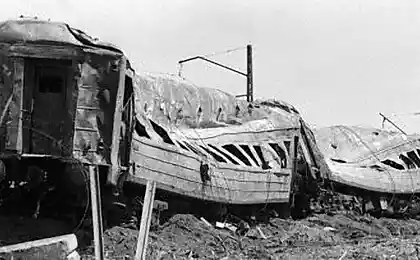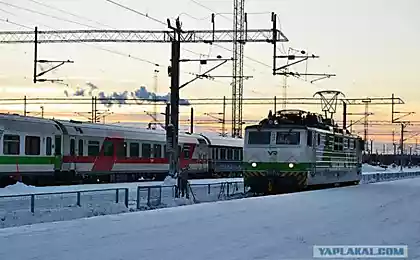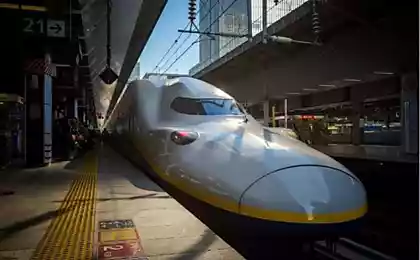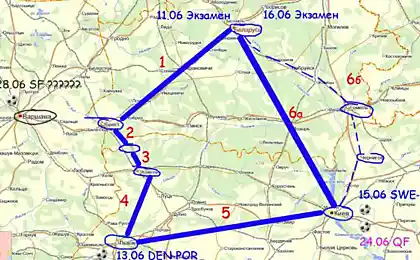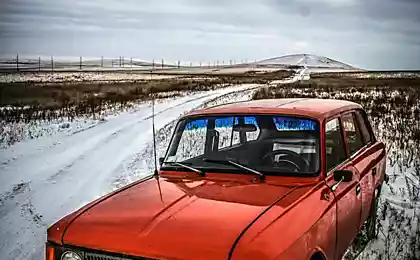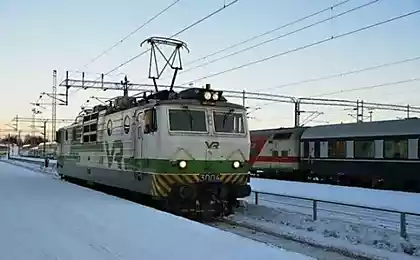129
I went to Florence by Italian train and noted with surprise that the wheels do not knock, our trains are closer to me and relatives.
Why do train wheels knock? After all, they are absolutely round and in theory should roll on the rails silently. And why, dear to the heart of our fellow citizens, lulling knocking is almost not heard on the railways of Europe? Let's try to find answers together.
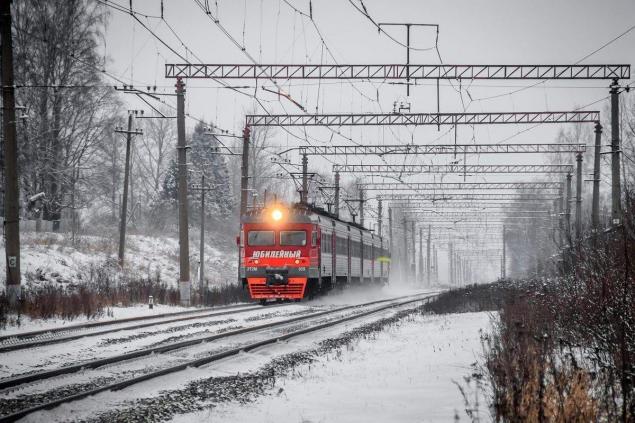
It turns out that for the knocking of the wheels we must thank... the harsh Russian winters. The fact is that, as we know from the course of physics, metals expand in summer and contract in winter. For example, 10 km of railway track with an increase in temperature by 10 degrees lengthened by more than 1 meter.
710690
If you do not leave gaps between the rail fragments, then their irreversible deformation may occur. In this case, the rails seem to squeeze themselves to the side. After that, further train traffic becomes impossible. Railroad workers call this phenomenon a temperature ejection of the track.
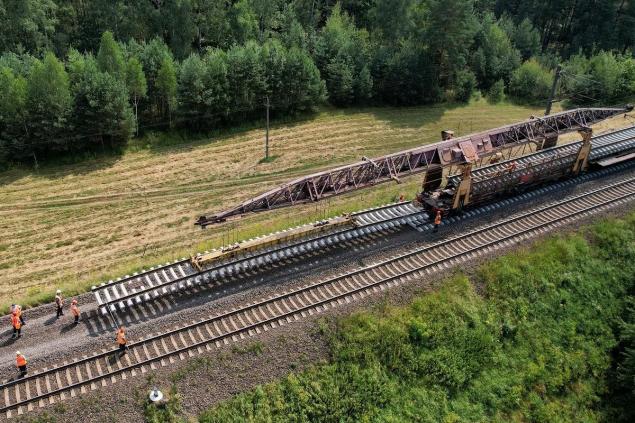
Therefore, on Russian roads, in most cases, a “slow” method of laying the path is used. The length of one rail link at the same time reaches 25 meters, and between the individual links leave small gaps - "thermozazor". When they hit the wheels of the train, we hear that characteristic knock.
In most of Europe, the climate is milder than the Russian one and does not have such strong temperature changes. This makes it possible to use intermittent, “velvet” paths. At the same time, individual rails are welded into monolithic lashes with a length of 800 meters or more.
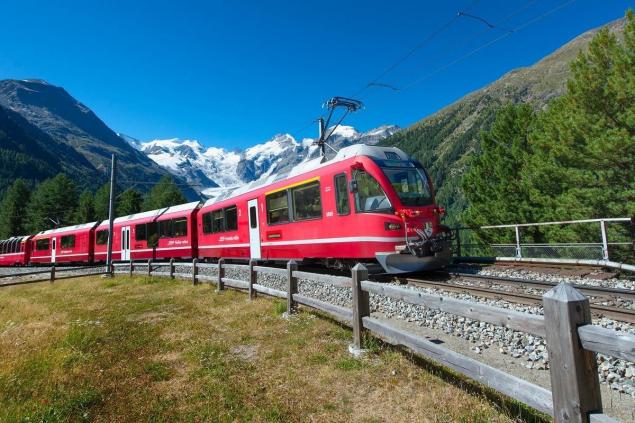
In general, the design looks like this: welded lash length of 150-950 meters, then equalizing span and again welded lash. The question arises, what does “equilibrium span” mean? These are 2-3 ordinary rails, the joints between which compensate for the temperature expansion.
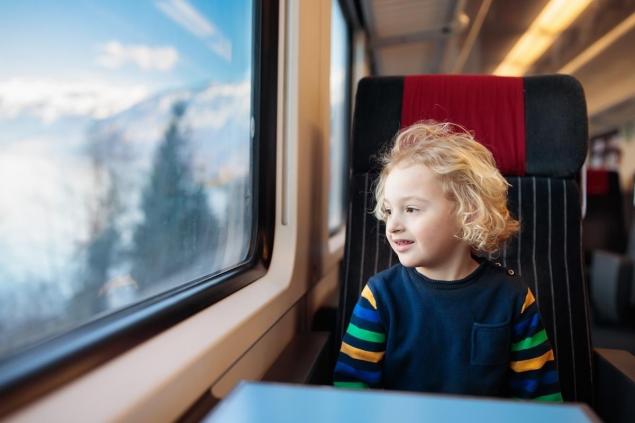
Thanks to the jointless path, driving becomes more comfortable, and the usual knock of the wheels disappears. But in order to appreciate the “velvet” road, it is not necessary to go to Europe. In Russia, such sections are part of the Volga, North Caucasus, Southeast and other railways.
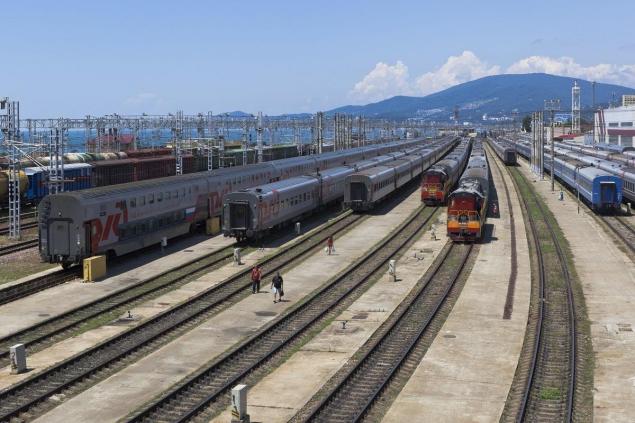
Travel by rail is not only safe, but also economical, which in the current realities is a rather serious advantage. However, traveling in the summer and winter can turn into a real torture, if not properly prepared. Editorial "Site" It will tell you how not only to survive on a domestic train, but also to enjoy the journey.

It turns out that for the knocking of the wheels we must thank... the harsh Russian winters. The fact is that, as we know from the course of physics, metals expand in summer and contract in winter. For example, 10 km of railway track with an increase in temperature by 10 degrees lengthened by more than 1 meter.
710690
If you do not leave gaps between the rail fragments, then their irreversible deformation may occur. In this case, the rails seem to squeeze themselves to the side. After that, further train traffic becomes impossible. Railroad workers call this phenomenon a temperature ejection of the track.

Therefore, on Russian roads, in most cases, a “slow” method of laying the path is used. The length of one rail link at the same time reaches 25 meters, and between the individual links leave small gaps - "thermozazor". When they hit the wheels of the train, we hear that characteristic knock.
In most of Europe, the climate is milder than the Russian one and does not have such strong temperature changes. This makes it possible to use intermittent, “velvet” paths. At the same time, individual rails are welded into monolithic lashes with a length of 800 meters or more.

In general, the design looks like this: welded lash length of 150-950 meters, then equalizing span and again welded lash. The question arises, what does “equilibrium span” mean? These are 2-3 ordinary rails, the joints between which compensate for the temperature expansion.

Thanks to the jointless path, driving becomes more comfortable, and the usual knock of the wheels disappears. But in order to appreciate the “velvet” road, it is not necessary to go to Europe. In Russia, such sections are part of the Volga, North Caucasus, Southeast and other railways.

Travel by rail is not only safe, but also economical, which in the current realities is a rather serious advantage. However, traveling in the summer and winter can turn into a real torture, if not properly prepared. Editorial "Site" It will tell you how not only to survive on a domestic train, but also to enjoy the journey.
"Christmas" begins to cook in May, when the first strawberry excites the aroma, and in December I begin to filter, invite to the table.
Which of the zodiac signs will profit in euros in 2022


